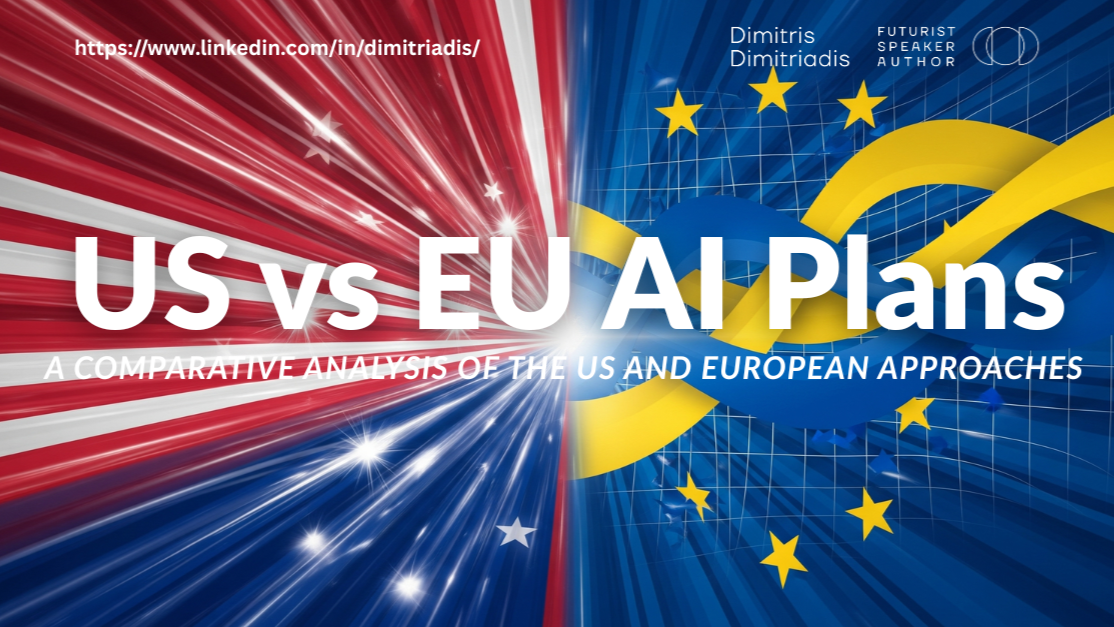
Abstract
What can other countries learn from Ukraine’s digital government? Among Ukraine’s efforts to defend against Russian aggression, the success of its government in using modern communication channels – from Twitter to Telegram – has stood out. But Ukraine’s government is no newcomer to digital technology. Before the invasion, the country was rapidly modernising its public services, with digital government at the heart of President Volodymyr Zelenskyy’s vision. This vision has supported Ukraine’s impressive resistance, and it shows a way forward for a free Ukraine. In short, the Ukrainian example shows that digital government is not only good government but essential for resilient government; a must-have, not a nice-to-have.
Introduction
Digital government is a growing field of knowledge. The phrase is often used to describe the use of digital technologies to transform public services in all areas of policy, including health, education and welfare. As war usually reduces the capacity of states to deliver for citizens and businesses, through the destruction of infrastructure, the displacement of populations and the drain on resources, to name a few factors, it is important to understand how technology can enable states to continue performing their functions in times of conflict. Even beyond war, the value of resilient government is becoming increasingly clear with a growing range of threats to state functioning such as pandemics and natural disasters. The challenge of creating resilient governments is a global one.
Among examples of best practice in digital government transformation, Estonia and Taiwan are often presented as pioneers with an innovative approach to providing services for citizens and businesses. Arguably, Ukraine deserves to be mentioned alongside them.
Much like Estonia and Taiwan, Ukraine punches far above its weight in international rankings. Between 2018 and 2020, Ukraine jumped 13 places in the UN’s eGovernment index (United Nations Department of Economic and Social Affairs, 2020). And although it currently sits at 69th in these rankings, it outperforms all other countries at a similar level of economic development (lower middle-income countries) and sits in the top third among upper middle-income countries.
Where Ukraine differs is in its size and population, meaning that digital government services need to be delivered at greater scale. In 2020, its population was double that of Taiwan and more than thirty times Estonia’s population. Ukraine’s example shows that resilient digital government need not be the preserve of rich and/or relatively small countries.
“The state as a service, not a bogeyman”
To get a sense of Ukraine’s digital government progress in recent years, it is worth considering its flagship digital effort, Diia (Ukrainian for “action” and short for derzhava i ia – “the state and I”). Diia is a modern app and platform that acts as a one-stop shop for public services and a wallet for digital versions of official documents. In a world first, digital passports and driving licenses have the same legal status as paper originals (E-Governance Academy, 2021).
One of the platform’s mottoes is “the state as a service, not a bogeyman”. It hosts more than ninety services: for example, Ukrainians can use a smartphone app to change their registered home address without appearing in person at the old place of residence – a boon for the third of Ukrainians who lived away from their formal address prior to the war.
Since its launch, Diia was seeing a rapid increase in uptake: at the end of 2021, Diia was used by 13 million people (a third of the country’s 44 million inhabitants and a fivefold increase in one year). Adoption was partly driven by its use as a Covid certificate platform and the introduction of ePidtrimka (“eAid”) – a one-off payment of 1,000 UAH (approximately £25) for fully vaccinated Ukrainians, linked to a digital bank card. Eligibility for ePidtrimka was determined automatically based on data already held on the citizen. In two months, the government issued 9.7 million cards (Ministry of Digital Transformation, 2022c).
At the end of last year, a review of Diia’s progress in Ukrainian media suggested that despite teething technical issues, it was becoming an indispensable daily tool.
Ukraine’s Rapid Digitisation
Diia is just the latest phase of a determined effort to build a digital-first government. President Zelenskyy’s administration in particular has embraced this agenda, establishing a Ministry of Digital Transformation (MDT) (Ministry of Digital Transformation, 2022) and setting a target of bringing one hundred per cent of public services online by 2024. Ukraine has been steadily putting in place the key components of 21st-century government (Tony Blair Institute for Global Change, 2019):
- Purposeful governance: in addition to MDT, named deputies coordinate digitalisation within every ministry and regional administration. In line with the EU’s “once-only principle”, government agencies are barred from requesting paper copies of documents if digital ones exist.
- Enabling infrastructure: underpinning Diia’s operation and the work of local officials, Trembita (Ukrainian for “alpine horn”) is a data exchange layer that connects over 80 different organisations and supports more than 200 different processes. Funded by the EU and modelled on Estonia’s X-Road (Nordic Institute for Interoperability, 2019), in 2021 Trembita carried out 860 million operations (ten times more than in 2020) (Dev.ua, 2021).
- Responsive institutions: the new legal framework and digital infrastructure have created opportunities to transform public services. A notable early success is eMaliatko (“eChild”), a digital one-stop shop for birth registrations, which automates nine services and is estimated to save citizens up to ten days.
Ukraine also created a strong digital government ecosystem to support its digital transformation, from the local to the supranational level. The creation of Chief Digital Transformation Officers (CDTOs) in every ministry and every regional post in Ukraine raised the importance of digitisation in government and empowered local officials to innovate. Ukraine also has flourishing partnerships with other countries that support it with the tools and knowledge required. For instance, it was Estonia’s eGovernance academy that supported the development of Trembita.
Digital Government at War
In the ongoing Russia-Ukraine conflict, these digital government initiatives were proving useful even before full-scale war erupted. The eMaliatko service, for example, was available to residents of breakaway Donetsk and Luhansk regions so that they could register children born in the conflict zone as Ukrainian citizens. Where kinetic war had previously downgraded the state’s ability to provide services for citizens, digital government tools meant the state could continue to provide support to Ukrainians.
As Russia’s invasion in February 2022 unfolded, Ukraine’s digital competence came to the fore. Ukraine’s early advantage on the information front was driven by effective use of digital communication channels (Thornhill, 2022).
Ukrainian officials at all levels, from President Zelenskyy down, are regularly providing updates on Telegram, with the head of the Mykolaiv region Vitaliy Kim’s upbeat video messages garnering particular praise (Trofimov, 2022). Kyiv’s Deputy Mayor Petro Olenych, one of the CDTOs installed to support Ukraine’s digital transformation himself, updated the capital’s digital app to include key wartime information and warnings. The government also set up Telegram bots for a range of purposes (Ministry of Digital Transformation, n.d.), from crowdsourcing reports of Russian troop movements to connecting internal refugees with local administration officials for information and support.
The communication is bidirectional. Updates to the Diia app functionality in the summer of 2022 included new digital survey functionality, used to engage hundreds of thousands of citizens. Early polls included deciding the design of the next national postmark and a consultation on what should happen to the Soviet coat of arms on a prominent monument in Kyiv.
Most importantly, digital tools like Diia allowed the government to stay in touch with Ukrainians and rapidly introduce new forms of support. The MDT teams were reportedly working 18 hours a day, 7 days a week (Digital Government Podcast, 2022). The Diia app now includes live streams of Ukrainian TV and radio stations, which might otherwise be unavailable in areas under attack, and a way to donate funds to the Ukrainian armed forces. By the end of May, 17.3 million Ukrainians were accessing the Diia platform, meaning that since the beginning of war the app added 4.4 million users, a pertinent example of the ability of technology to scale the reach of government despite conflict.
The government also announced that ePidtrimka cards would be used to give employees and the self-employed in regions affected by the war an extra payment of 6,500 UAH (£165), the equivalent of the monthly minimum wage (Ministry of Digital Transformation, 2022b). Because Diia already holds payroll, business registration and residence records, users can verify eligibility and apply for support directly in the app (Mykhailo Fedorov, 2022). In the first week since the announcement, over 2.7 million applications were made (ePravda, 2022). Support payments for internally displaced persons are available via the app for those who register with this status.
MDT also introduced a simplified war-time digital ID (Ministry of Digital Transformation, 2022c), available to all Diia users and recognised by local law enforcement, and secured agreements with Moldova and Poland border guards to accept this digital ID and the Ukrainian digital passport in lieu of paper documents – an invaluable use case for refugees who might have lost their documents during evacuation.
The government is also looking to create resilience to its economy by supporting its government-to-business service, Diia City. Launched before the war, it is a legal and tax framework for the IT industry to support the creation and investment in jobs and the development new technologies. Through a competitive tax regime and digital space for businesses, Ukraine hopes to attract talent from around the world. By 31 May 2022, around 250 companies – international and Ukrainian – had become “citizens” of Diia City, with more than 60 per cent of them becoming members since the war began (Diia City, 2022).
The Future Direction of Digital Government in Ukraine
The pace at which these changes have been introduced – itself a testament to Ukraine’s robust digital infrastructure – suggests we can expect to see more innovative uses soon. The use of the digital government can also provide an insight into what is possible when recovery begins in earnest:
- Digital democracy: the use of digital surveys on the Diia app highlight the potential to create a thriving digital democracy; one that connects residents regardless of where they are in the world. While in its early stages, and covering only small areas, the potential is clear to use this direct e-democracy tool to consult and even co-create the new Ukraine.
- Digital economy: Diia City forms part of the economic recovery that is made possible through digital government, attracting talent and investment from around the world, while safeguarding tax revenue.
- Frictionless services: the experience of Ukrainian digital government in war is to remove barriers for accessing public services. Whether this is providing seamless payment to workers or allowing citizens to change their registered address when they move back with little stress and few administrative barriers, the Ukrainian example shows how digital government innovations can support recovery. At a session in May 2022, Minster Fedorov announced that all welfare payments will be made via Diia in the future.
It seems that Ukraine’s investment in digital government and its intent to transform its public services may have laid the foundations of a new relationship with its citizens – one that is helping it resist Russia’s aggression today and lay the foundations for a stronger Ukraine tomorrow. The Ukrainian example has underscored the reality for countries around the world that digital government isn’t just good government, it’s resilient government: not a nice-to-have, a must-have.
This lesson extends far beyond Ukraine’s borders alone. Consider what else the countries of Ukraine, Taiwan and Estonia have in common: an existential threat to their territory and people by another state. These threats have been a constant presence in the countries’ recent history. And while there are multiple factors that act as accelerators of digital government – including regional coordination and funding, citizen expectations, and political will – cyber warfare and the threat or enactment of kinetic war have proven to be the ultimate test of the resilience of digital government, a challenge these states have risen to meet.
References
- Dev.ua. (2021, December 23). “Сэкономили 3 млрд грн, уровень удовлетворенности людей 97%”. Минцифра отчиталась за 100 побед в 2021 году. Dev.ua.
- Digital Government Podcast. (2022, March 15). From Ukraine: Digital services keep working despite the war. Listen Notes.
- Diia City. (2022, June 2). https://twitter.com/citydiia?lang=en. Twitter. https://twitter.com/citydiia?lang=en
- E-Governance Academy. (2021). Diia mobile application Evaluation report. In EU4DigitalUA.
- ePravda. (2022, March 16). єПідтримка: вже майже 3 мільйона українців подали заявки на 6 500 від держави. Економічна правда.
- Ministry of Digital Transformation. (2022a). Міністерство цифрової трансформації України. Thedigital.gov.ua.
- Ministry of Digital Transformation. (2022b). Mykhailo Fedorov: Ukrainians can receive UAH 6,500 within the framework of the Support as of today. Kmu.gov.ua.
- Ministry of Digital Transformation. (2022c, February 14). Сплатити комунальні послуги та передплатити газети — за кошти єПідтримки. Telegram.
- Ministry of Digital Transformation. (2022d, March 5). Чатботи, які допоможуть подолати окупанта й допомогти собі та близьким. Telegram.
- Ministry of Digital Transformation. (2022e, March 11). У Дії з’явиться єДокумент. Thedigital.gov.ua.
- Mykhailo Fedorov. (2022, March 8). FEDOROV. Telegram.
- Nordic Institute for Interoperability. (2019). X-Road® Data Exchange Layer. X-Road® Data Exchange Layer.
- Thornhill, J. (2022, March 3). Ukraine is winning the information war against Russia. Financial Times.
- Tony Blair Institute for Global Change. (2019, June 1). Transforming Government for the 21st Century. Institute.global.
- Trofimov, Y. (2022, March 8). Russian Invasion Turns Ukraine’s Local Politicians Into Resistance Leaders. Wall Street Journal.
- United Nations Department of Economic and Social Affairs. (2020). UN eGovernment Knowledge Database. Un.org.
A publication by Alexander Iosad and Oliver Large as a follow-up to the forum "War in the Digital Age".
Alexander Iosad is a policy lead at the Tony Blair Institute, where his work focuses on how governments can use technology to transform public services. His background includes roles in education technology venture capital, public sector and innovation consulting, and product management. He also holds a DPhil in history of science.
Oliver Large is a Senior Policy Analyst at the Tony Blair Institute. He has written widely on digital government in Europe, including in Ukraine, and is currently leading a project on digital labour platforms. His policy interests include the future of work, digital accessibility, and digital democracy. Prior to working at TBI, he led research on education and employment policy at a UK policy think tank. He was a finalist for the Bennett Prospect Prize for Public Policy 2021, writing on governing in the populist age.


